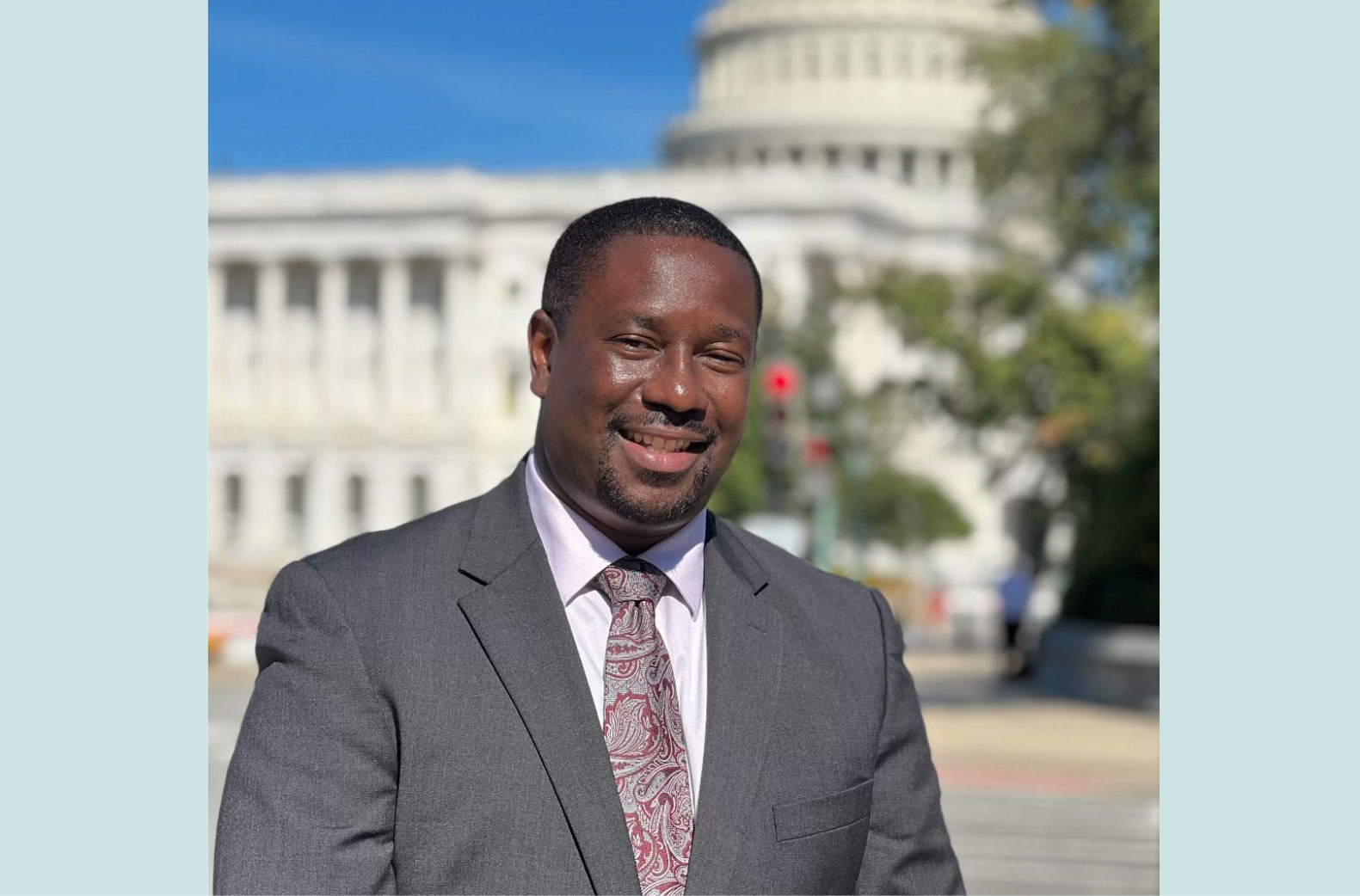Today, we’re talking hunger.
Did you know in the last three years, the demand for the Supplemental Nutrition Assistance Program (SNAP) has skyrocketed? In 2022, one in eight Americans — or more than 41 million people — received SNAP benefits.
Those benefits were expanded in the early days of the pandemic, as the country faced unprecedented uncertainty around the economy and the grocery supply chain. During that time, recipients were offered the maximum aid for their household size.
Earlier this year, that program expansion ended, which meant monthly benefits were cut by an average of $90 per recipient, with some households losing $250 or more in benefits.
At the same time, we see consumer debt has been steadily rising, with over 20 million Americans currently behind on their utility payments and nearly 25 million behind on credit card, auto loan or personal loan payments. That’s the highest number since The Great Recession.
So without enough money to pay for food, a lot of people are forced to make difficult decisions. Do you pay for breakfast or the electric bill? Lunch or the prescription? Do you default on your loan payment or just go hungry altogether?
Food insecurity experts are saying the SNAP cuts are pushing the country closer to a looming “hunger cliff.”
What does that mean? And what can we do to mitigate the impact of these SNAP cuts for households in need?
To help answer these questions, we’re talking with Eric Mitchell, Executive Director of the Alliance to End Hunger—a network of companies, nonprofit organizations, universities, foundations, and individuals. He is working to build the Alliance’s advocacy capacity on Capitol Hill and in local communities, to build the public and political will to end hunger in the U.S. and around the world.
Because, as he said and I doubt anyone would disagree with, no one should go to bed hungry.
Show highlights include:
- Why becoming a lobbyist appealed to Eric Mitchell and his favorite thing about it.
- Current state of hunger in the U.S. and what the Alliance to End Hunger is doing to help.
- Why it’s important to end hunger and what’s at stake.
- Who hunger affects.
- Why there is an increase in the need for SNAP benefits.
- How a shift in SNAP benefits has resulted in a “hunger cliff.”
- Why Mitchell thinks the government’s definition of food security could be improved.
- Why eligibility requirements for SNAP haven’t kept pace with the level of need.
- Why SNAP benefits should adjust even as need isn’t consistent.
- How getting an understanding of those affected can lead to increased government support.
- Why there’s a need for the government to protect domestic nutrition programs.
- How you can get involved and help fight against hunger.
Listen and subscribe to the Do Gooders Podcast now. Below is a transcript of the episode, edited for readability. For more information on the people and ideas in the episode, see the links at the bottom of this post.
* * *
Christin: Well, Eric, welcome to the Do Gooders Podcast. Thank you so much for joining me.
Eric Mitchell: Thank you for having me. I appreciate the invitation and I look forward to our conversation.
Christin: Yes, likewise. As we get started, I want to just understand you a little bit better. So for context, for anybody who’s listening, you started your political career, I understand, on Capitol Hill, serving as policy advisor to civil rights icon Congressman John Lewis and legislative assistant to U.S. Congressman Sanford Bishop, Jr. Today, you’re actively involved on Capitol Hill. In fact, for more than five years recently, you were recognized as a top lobbyist by The Hill newspaper. What is it about this field that appealed to you? And what’s your favorite thing about the work you do today?
Eric Mitchell: Well, there is a long answer to a great question that I will try to make it short and simple. I really was introduced to advocacy and lobbying during my time on the Hill. Just like a lot of folks, I actually started even before Mr. Bishop’s office where I served as an intern for my local member of Congress. I’m originally from Tampa, Florida. And I went to school here in Washington, D.C. I went to Howard University. And one of the benefits of going to school here is that you have the opportunity to do internships with many of the government offices. So I worked on Capitol Hill as an intern for my local member of Congress at the time. And that’s really where I got the bug to go into the political field.
Initially, I was going to be an attorney. I was gonna go back home to Florida, maybe become a judge one day. I thought that I was gonna be the next Thurgood Marshall at some point. And so when I started doing internships on the Hill, that’s what’s really got me really, really interested in policy and policymaking. And so immediately after I graduated, I started my career working for Congressman Bishop. He was the first person I worked for on graduating from college. And he actually gave me the opportunity to put my foot in the door as a staff assistant. So basically I was that person that sat at the front desk opening mail and at the time you know this we used to get newspapers so I used to do newspaper clippings and summaries of what’s happening in the news that day and as well as answering phones and as I was doing that job I realized that there were individuals who he met with all the time. Anytime there was a difficult vote he would ask them to come to the office to maybe get their thoughts on how a particular vote would impact a specific sector. Because he represented the agriculture community, obviously he thought about what local farmers are doing. He always was asking, how is this gonna impact our district? So that was really my introduction to advocacy and the role that lobbying and lobbyists and advocates play in helping to influence policy.
And so at one point I said, as I grow in this field, that’s the lane I really wanna go into, is that person that behind the scenes, look to as a go-to person for a member of Congress or elected official and their staff to give them advice on how to make certain votes, give them statistics on how that vote’s gonna impact certain communities, and really help to be more of a behind the scenes influence to making policy. And so to kind of wrap up your questions, that’s really what got me into the advocacy field. And then after that, working on the Hill for seven years, I started my lobbying career at a lobbying firm that represented nonprofits and faith-based groups and helped those organizations and municipalities, helping those organizations secure money for specific programs and projects that they were doing in their local communities. And I did that for seven years where I became a vice president at that firm. And then I left there to work at Bread for the World, where I was a government relations director for seven years, serving as their chief, basically their chief officer on Capitol Hill, advocating for policies related to hunger, nutrition and poverty. And also as the root causes to hunger. And that’s where I really started realizing I had a niche. Particularly at specific issues around food security, mainly because of the populations that are impacted by hunger and malnutrition, but also realizing that this is something that really, you realize that the work that you’re doing, the policies that you’re pushing for are actually making lives of people better. And so that’s really what got me into this field. And that’s one of the reasons why I continue to enjoy what I’m doing to this day.
Christin: And you now work to build the public and political will to end hunger. What is the state of hunger in the U.S.? And at the same time, maybe you can tell us a little bit about what is the Alliance to End Hunger?
Eric Mitchell: Well, I will start with who we are, the Alliance for End Hunger. We are a coalition of over 100 members. We are a membership organization. Our coalition is very diverse. Our membership includes national organizations across different sectors, private sector, the international NTO sector, faith-based organizations, universities, and even individuals. We all come together with the common goal—to end hunger in the US and around the world and creating the public and political will to do so. And we do that by bringing these unique voices to the room to advocate on specific policies related to food security both here in the United States, as well as globally. When you talk about the state of hunger here in the United States, statistically there’s over 33 million people who are struggling to put food on the table, who are facing food insecurity. And out of that, those 33 plus million people that represents around 13 million households. So that’s about 10 percent of all the U.S. households in this country are figuring out how they’re gonna put food on the table any given day in the year.
Christin: It’s unbelievable.
Eric Mitchell: When you consider all the resources that we have in this country, it’s mind-boggling to realize that there are still so many people who are trying to figure out how to make ends meet. To answer your question about where we are in the state of hunger in the U.S., we are in the midst of a hunger crisis. I’ll just be blunt. Because of inflation and high prices of food, it’s more expensive to basically feed yourself and your family. Although we see low unemployment, those high prices in food make it very difficult. The rollback of expansions in the SNAP program, which I’m happy to talk about a little later, certainly did not help because, you know, SNAP serves as a really a first line of defense to ensure that people have what they need to be able to feed themselves and their families. And so as a result of the rollback of the SNAP allotments that we were able to receive during the COVID pandemic, those rollbacks have now resulted in, as I said, people trying to figure out how to purchase food. They have to use more public assistance, whether it’s going to your local food banks or food pantries. And as a result of that, many of those food banks and food pantries are starting to see increased numbers and the increased demand. And of course, their resources are limited as well.
And so when you look at some of the leading feeding organizations, like for example, Feeding America, I believe there’s this statistics that says between April and May, around 95 percent of Feeding America’s food banks reported seeing a increase in demand and as a result of food prices. WIC has also experienced participation and an increase in participation. And WIC is the federal nutrition program that helps mothers and young children from conception through age five. And so that participation has increased over the last few years for people are trying to figure out how to make ends meet. So I would say, you know, state of hunger in this country is very serious. We are definitely in the midst of a hunger crisis, and it’s something that needs to be prioritized among our policymakers.
Christin: And I want to get into those details more with you, but making sure we’re setting the scene here really. Who does hunger affect?
Eric Mitchell: Well, hunger impacts everyone. When you think about these specific demographics, obviously, that are impacted more than others. Communities of color, Black-led households, for example, are a higher risk of hunger than white households. Households where there are young children are at higher risk of food insecurity, as well as households that are basically headed by a single parent, whether mother or father. And at the end of the day, a lot of this is a result of income. A lot of it is a result of not being able to afford food in the first place. And so many of those demographics are at risk of hunger.
I would also mention that in this country, there is a large group of our brothers and sisters who are not often talked about, you know, when you think about, for example, Native American communities, they are often at severe risk of hunger and it’s not necessarily recorded or talked about a lot among national organizations. But some reports show that food insecurity among Native American populations are up to around 25 percent in those communities. Other underrepresented communities that are also impacted by food insecurity; our older Americans, elderly brothers and sisters, individuals within the LGBTQ communities, essentially, all that that to say is hunger impacts everyone.
I often say that food insecurity and hunger in this country doesn’t have a preferred zip code. It doesn’t care about your race. It doesn’t care about your religion. It doesn’t care about your background. Because the way things are, particularly in our economy, people are ebbing and flowing in regards to being able to afford their basic essentials and food is part of that. And so any given moment, there may be people, coworkers, people you know in your churches, at your schools, who at any given point throughout this year may have to go to a food bank to be able to get the food they need to feed themselves and their families.
Christin: This might seem like a silly question, but I want to hear it in your words: Why is it important we end hunger? What’s at stake?
Eric Mitchell: Well, outside of the humanistic need, saying that no one should have to go to bed hungry. Outside of that, just in general, you just think about the impact that food insecurity has on a society studies show that children who are food insecure have difficult health outcomes. Education outcomes are lower. When a child has food they’re able to learn, they’re able to grow, they have proper brain development when they have proper food in the earlier stages of their life. From an adult standpoint, work productivity improves when folks do not have to worry about how they’re gonna figure out to make ends meet so they can feed themselves and their family. And just thinking from a larger society and civilization standpoint, when a community or society has to deal with food insecurity, that also creates instability outside of the United States. You talk about from a global perspective.
Many of y’all may recall the Arab Spring that happened, I believe 2016, prior to that. A lot of that happened as a result of food insecurity in those countries. You look at what the impact of the war on Ukraine is having right now with the prices of food, but also the availability of food in some of the most desperate parts of our world. When there’s food insecurity, there’s instability. And so it’s very imperative for us to be able to ensure that folks have what they need so that they can support themselves.
Christin: Over the last three years, the demand for SNAP, or the Supplemental Nutrition Assistance Program, has skyrocketed. In 2022, for example, one in eight Americans or more than 41 million people received SNAP benefits. So first of all, what is SNAP? And then why are we seeing the increase in need?
Eric Mitchell: Sure, so SNAP is short for the Supplemental Nutrition Assistance Program. Many folks may remember what we call SNAP’s former name, which was Food Stamps, but it is the Supplemental Nutrition Assistance Program. SNAP serves as our largest domestic nutrition program here in this country. It is a mandatory program. It’s considered a safety net. And what that essentially does is that it provides allocation of funding so that when folks are going through tough time, it’s not a permanent program, but when folks are going through tough time, SNAP is there to be able to respond so that people can still be able to purchase food that they need at your local grocery stores, farmers markets, what have you.
The reason why you saw the demand for SNAP increasing over the years, that’s the other thing. SNAP increases and decreases based on need. So when the economy is strong, people have jobs, people have wages that they can afford to pay rent, buy food, buy medicine, the need for SNAP decreases. When the economy is weak, when we’re going through a global pandemic, when people are losing, when unemployment is high, you’ll see that the need for SNAP increases. And that’s what happened over the last few years. It seems like it was a lifetime ago, but we literally just got out of the emergency side of the COVID pandemic. But during the COVID pandemic, unemployment was high, people were unable to work, and as a result, SNAP was there to be able to serve as a safety net so that folks did not fall into hunger.
What we’re seeing now is that while we’re out of the emergency side of COVID, the economic impact of the pandemic continues to loom large even with with many of our neighbors, I would say. And wages are not keeping up with the current inflation, the current cost of living. And as a result of that, like I said before, although you see low unemployment, you’re still seeing over 33 million people who still are considered food insecure and are still in need of the benefits so that they can be able to get food. So that’s essentially why you saw the increase of SNAP benefits over the past few years.
Christin: Yeah, and then throw a pandemic into it. And we know Congress expanded the SNAP benefits in the early days of the pandemic, but earlier this year, those monthly benefits were cut back. That emergency expansion went away basically, which meant an average of $90 per recipient, some households losing up to $250 or more in benefits. Some experts have warned of a hunger cliff and you said we were in a hunger crisis, at this point in time. What’s your take on the change in benefits and what it all means in the overall landscape?
Eric Mitchell: I would say for many folks, many families definitely felt that hunger cliff. And when you think of a hunger cliff, you visualize what a cliff does. It’s like you’re at this gradual plateau and all of a sudden, there’s a drop. And so when you were receiving a substantial number of benefits over a period of time, particularly in the backdrop of, like I said, higher food prices. Wages aren’t necessarily matching the demand of cost of living, et cetera. And then all of a sudden those benefits were cut by more than half. That results in a major cliff for many of our Americans. So we recognize that the increase in SNAP benefits was designed to be temporary during the COVID crisis. But what we’ve tried to relay to our elected officials is that while the emergency side of COVID is over, the economic impact of it still remains and the need is still there. And so we were advocating very hard to ensure that those benefits were not reversed.
And, you know, unfortunately families are still feeling the pain of the ending of those benefits and rolling these things back does not take into consideration the current circumstances many families are feeling. And so that’s a message that we continue to reiterate to our elected officials. And as Congress starts to look at legislation which authorizes the program, the SNAP program, and sets certain policies around the SNAP program, we’re working hard to ensure that they are not providing even additional burden to families that are continuing to try to figure out how to make ends meet, by creating more barriers to being able to get these benefits.
Christin: To qualify for the SNAP benefits, your household’s gross income must be at or below 130 percent of the poverty line. So that means a lot of people who are food insecure, according to the USDA’s definition, don’t qualify for SNAP benefits. What are some of the reasons you think that eligibility requirements for SNAP haven’t kept pace with the level of need?
Eric Mitchell: I think there’s a fundamental misunderstanding of what makes people food insecure. Like I said before, a majority of people who are on SNAP are either working adults, elderly or children. But that is often not the image, or at least that’s not the message that you hear when the general public or policymakers talk about SNAP recipients. But I also say that, politicians are always looking at how to restrict programs. It’s hard to get politicians to figure out ways to expand access to programs, particularly a program like SNAP. And so, being able to be proactive and looking at this from an anti-hunger lens is something that is politically challenging. I think, to answer your question of, what the perception of the program, the benefits of this program, a misunderstanding, and honestly just the lack of political will to do the right thing at the right time to ensure that more people have access to the program.
Christin: Do you think the government’s definition of food security could be improved? We know the USDA defines food security as access by all people at all times to enough food for an active, healthy life. Is that a good definition of what we’re aiming for?
Eric Mitchell: I often don’t get into the debate of defining food insecurity, but what I will say is, looking from conversation of why people are food insecure in the first place. There’s often a debate around using the SNAP program to incentivize healthier food options. And those are things that we think are important. But also I would say that when it comes to food insecurity, we need to make sure that the benefits that people receive are able to go as far as we can to be able to purchase the food they need to feed themselves and their family. As well as looking at ways to expand the program, to incentivize, you know, healthy vegetables, things of that nature. So there’s programs like Gus NIP, and other initiatives that make it easier to buy healthier options. And so the SNAP program in our view, it should be used as a way to ensure that people have what they need to buy the food that they need for themselves and their family.
Christin: Back to the data, we’ve talked about the number of people who are food insecure. That’s reported as an annual number. But there’s some new research from USC that shows if people are asked about food insecurity on a monthly basis, the rates go up by about a third. What do you think is behind the seasonal upticks?
Eric Mitchell: Well, just to let you know again, that there isn’t a consistent current around the need. At any given moment, there may be individuals or families who are in need of these type of programs, particularly when you think about low-wage workers. Low-wage workers have a number of barriers and things throughout the year that may require the need for staff programs, whether it’s rising of heating costs, rising of medical costs, rent. And oftentimes, particularly like where I’m from, in the state of Florida, or I’ll even take this. When you look at some areas where it gets colder in the winter months, they may have to put more money towards their heating bill for their housing, things like that. And so as a result of these type of ebbs and flows of when the need is important, that just lets you know that the need for SNAP needs to be able to adjust to when it’s most important.
Christin: Yeah, it’s a domino effect, really.
Eric Mitchell: It has a domino effect, correct.
Christin: So in your view, what could the federal government do? What could we as a society do to better support food security?
Eric Mitchell: Basic level, we need to protect our domestic nutrition programs, whether it’s the SNAP program, whether it’s the WIC program. I didn’t even get a chance to really talk about that as much. When you think about the benefit that it has both to the nutrition as well as the health outcomes for the mothers as well as developing children, we need to make sure that these programs are protected. These programs have a proven track record that really shows that they have not only economic benefits to our communities but they also help to provide better health outcomes, better education outcomes, and just better overall quality of life. And so I think at the basic level, we need to do all that we can to ensure that these programs remain strong and vibrant.
Christin: So then what about on an individual level, somebody who’s listening, who wants to better support in a way that they can, what are some ways people can get involved on an individual level to help fight against hunger?
Eric Mitchell: One of the big things I often say is that you can’t food bank your way out of hunger. It does take policy. And in order to move policy, it takes advocacy. And so, working with organizations such as The Salvation Army, but as well as the Alliance in Hunger and others, using those channels to advocate to our elected officials, to our members of Congress, to prioritize food security as a central pillar to their policy decisions. So like I said earlier, this major legislation that’s up for reauthorization this year, is called the Farm Bill, that reauthorizes the SNAP program, it reauthorizes the programs that help our food banks, programs that help deliver food to older Americans. We need to reach out to our elected officials and let them know that we want to see this Farm Bill viewed as an anti-hunger legislation. And so, going through that lens, you need to prioritize programs and policies that will address food security in this country. And that brings solutions to ending hunger and malnutrition in this country. So, I urge you all to check out our website, alliancetoendhunger.org. or go to your local organizations or your churches or anywhere that you feel comfortable to do advocacy with your elected officials who make these decisions.
Christin: Eric, thank you so much. Thank you for sharing, and thank you for those resources and giving us a way to get involved.
Eric Mitchell: Well, thank you for having me. I really enjoyed the conversation. And again, if you are interested in learning more, alliancetoendhunger.org, check us out. We definitely can go to depth about what our priorities are on these policies.
Additional resources:
- See how The Salvation Army fights hunger.
- It’s because of people like you The Salvation Army can serve more than 24 million Americans in need each year. Your gift helps fight for good all year in your community. It’s an effort to build well-being for all of us, so together we rise—and that good starts with you. Give to spread hope with a donation of funds, goods or time today.
- How do we treat everyone with love and kindness, as if they were our neighbor? Get the Do Good Family Roadmap and take a 4-week journey for families in how to be a good neighbor. Follow the guide to see what the Bible says about the art of neighboring and take tangible steps together on your printable roadmap to be a caring, helpful, welcoming and supportive neighbor right where you are.
Listen and subscribe to the Do Gooders Podcast now.













